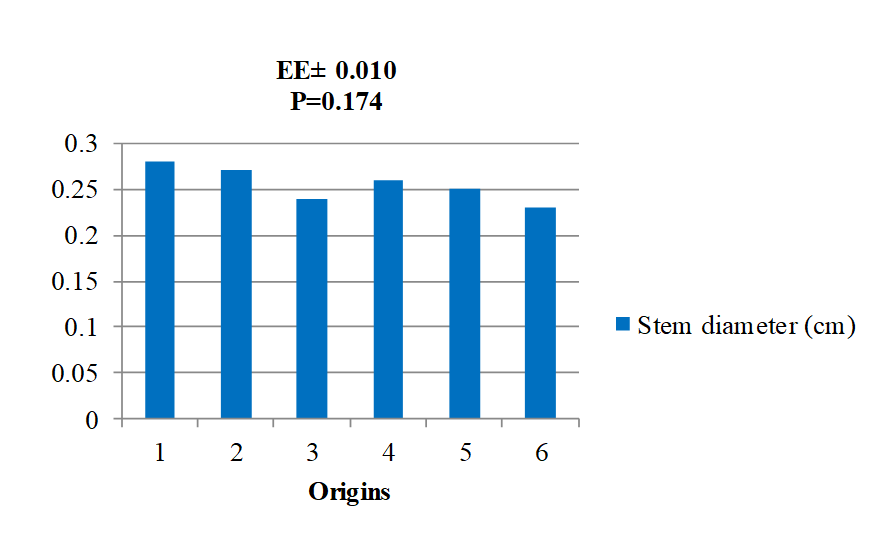Morphologic indicators and harmful organisms associated to six Moringa oleifera origins under nursery and field conditions
Main Article Content
Abstract
In order to monitor the morphologic indicators and the organisms caused of plagues associated to Moringa oleifera two tests were conducted: nursery and field. The treatments were represented by six moringa origin, collected in three provinces of the country. In nursery, a total of 396 polyethylene bags were used in a completely random design, with 66 repetitions. In field, a random block design with three replications was applied. In both test the arthropods and associated pathogens were monitoring. The phytosanitary damage and morphologic indicators of the crop growing were evaluated. In nursery phase, the plants did not have economic damages by harmful organisms and showed favorable grow indicators. Therefore, in field, the new transplant plantlets were affected by strong attacks of Atta insularis, which caused defoliation and plantlets loss. The survival has similar average ranges in all origins. The count of branches was better in the origins 4 and 6 with 4.40 and 4.18, respectively. The height, at 120 days after the transplant, showed sizes higher than 145 cm, in the origins 2 and 6. The higher stem thickness (31.2 mm) was showed in the origin 2. It is concluded that the evaluated origins, according to their morphologic indicators performance have potentialities for their use. It is recommended to continue with the phytosanitary alertness of the crop and to regulate the forage activity of A. insularis until achieving the moringa establishment. It should be alert in the fruiting phase of the incidence of Gitona sp. fly to minimize the damage to the seeds, to avoid the secondary presence of pathogens and to allow the harvest of healthy seeds.
Article Details

This work is licensed under a Creative Commons Attribution-NonCommercial 4.0 International License.
Those authors that have publications with this journal accept the following terms:
1. They will retain their copyright and guarantee the journal the right of first publication of their work, which will be simultaneously subject to the License Creative Commons Attribution-NonCommercial 4.0 International (CC BY-NC 4.0) that allows third parties to share the work whenever its author is indicated and its first publication this journal. Under this license the author will be free of:
- Share — copy and redistribute the material in any medium or format
- Adapt — remix, transform, and build upon the material
- The licensor cannot revoke these freedoms as long as you follow the license terms.
Under the following terms:
- Attribution — You must give appropriate credit, provide a link to the license, and indicate if changes were made. You may do so in any reasonable manner, but not in any way that suggests the licensor endorses you or your use.
- NonCommercial — You may not use the material for commercial purposes.
- No additional restrictions — You may not apply legal terms or technological measures that legally restrict others from doing anything the license permits.
2. The authors may adopt other non-exclusive license agreements to distribute the published version of the work (e.g., deposit it in an institutional telematics file or publish it in a monographic volume) whenever the initial publication is indicated in this journal.
3. The authors are allowed and recommended disseminating their work through the Internet (e.g. in institutional telematics archives or on their website) before and during the submission process, which can produce interesting exchanges and increase the citations of the published work. (See the Effect of open access).
